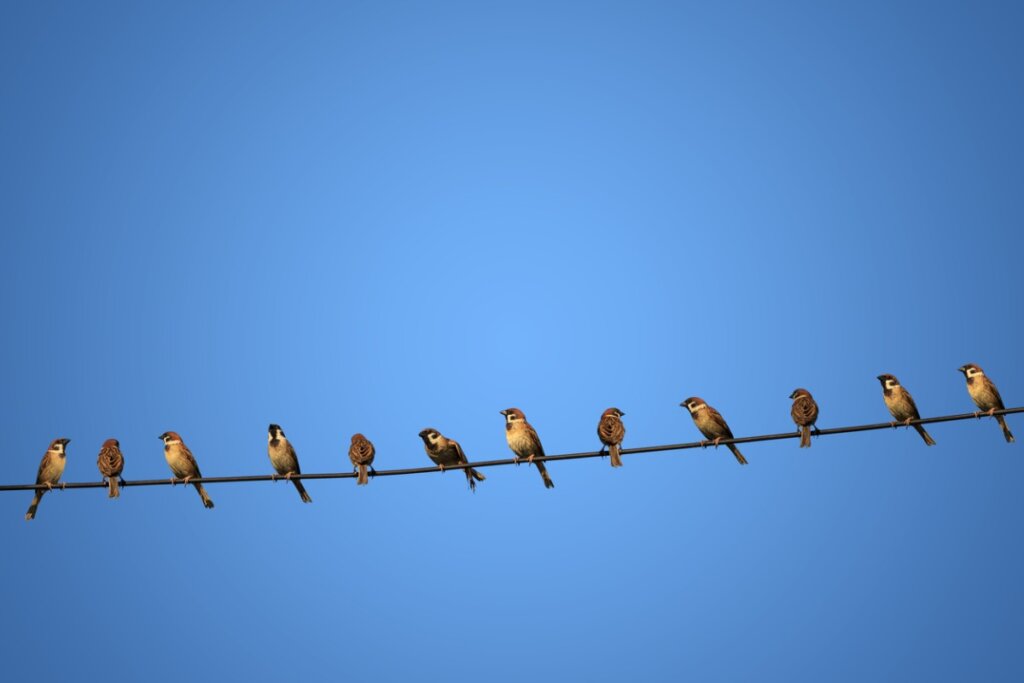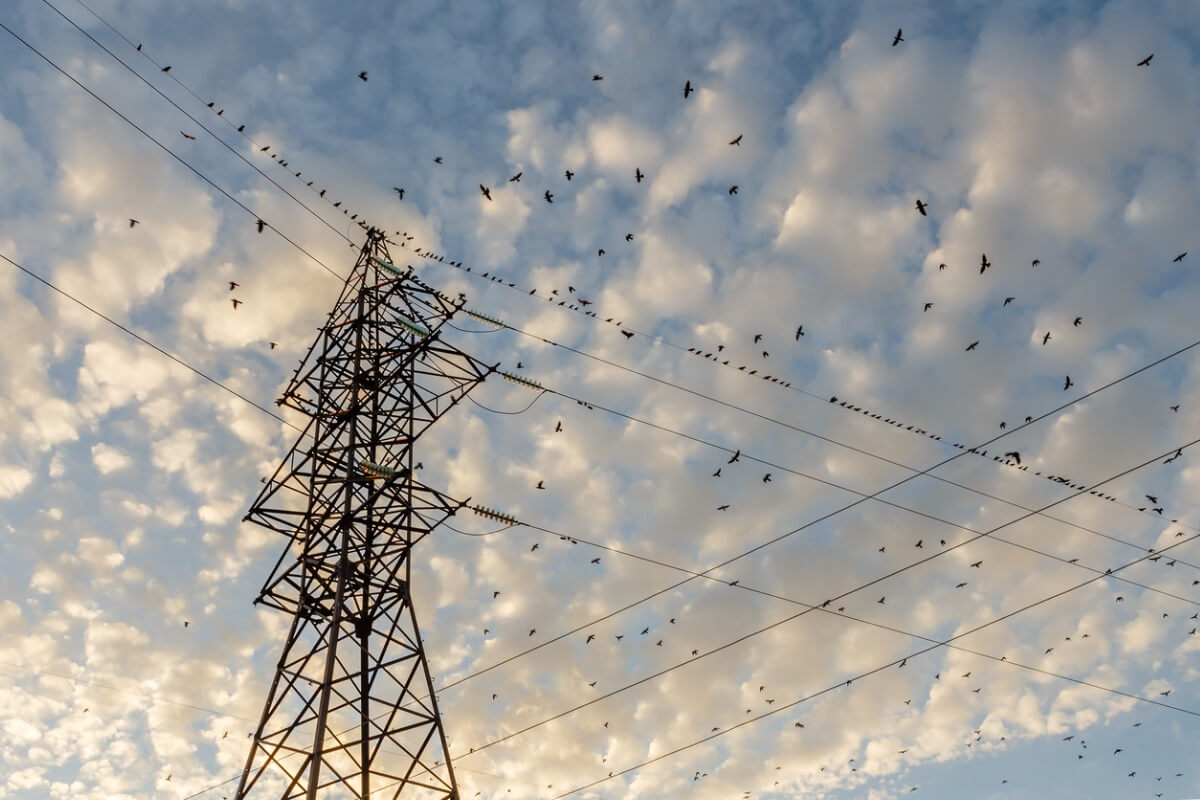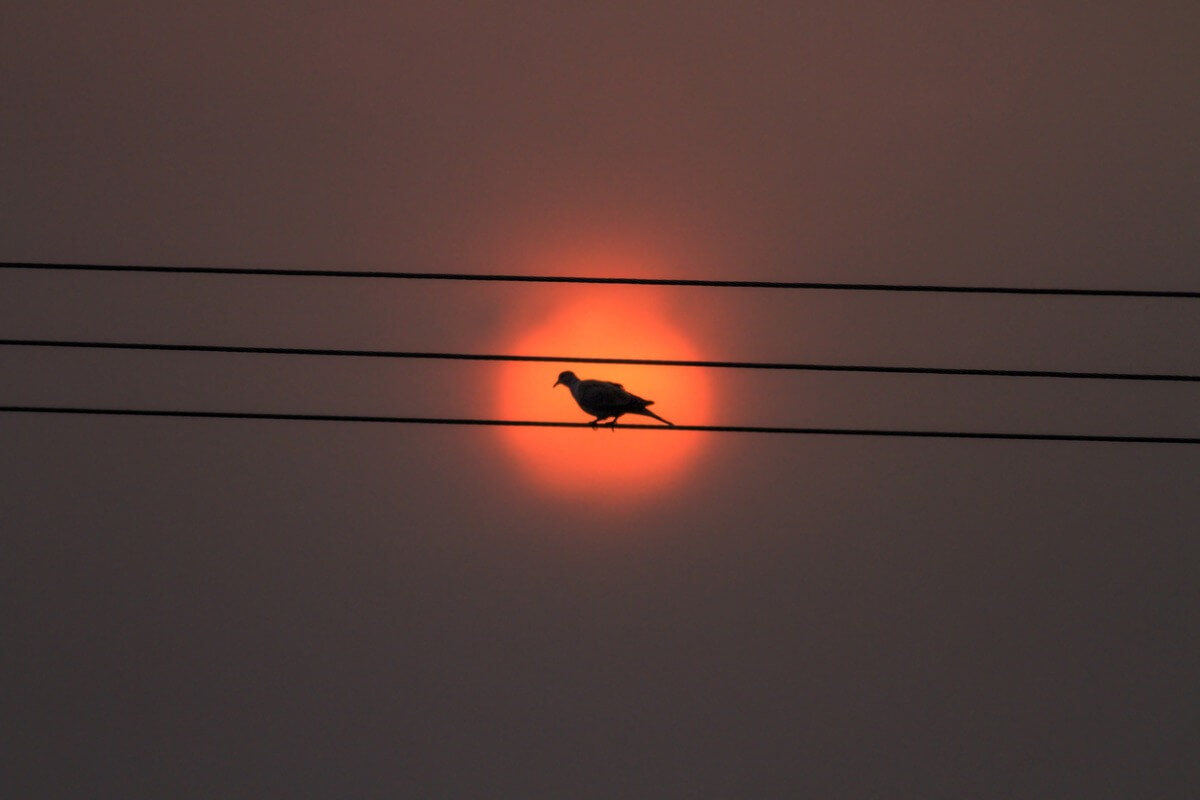Why Don't Birds Get Electrocuted When They Perch on Power Lines?

Children are warned from an early age about the dangers of electricity: “don’t bite the wires”, “don’t plug things in with wet hands”, “don’t stick your fingers in the sockets use plugs so children don’t stick their fingers in the socket holes” and so on. So when birds don’t get electrocuted when perching on power lines, we can’t help but wonder why.
Why do birds choose this place to perch? If it were a human touching it, it would most likely end in disaster. The secret lies in the characteristics of electricity itself, as you’ll read below.
How does electricity move through wires?
An electric current is nothing more than the movement of electrons through a material. The path these particles take is always the same: they travel from the point with the highest electrical potential to the lowest, as if it were a drop in the ground.
Electrical wiring carries an enormous amount of electrical energy, so much that it can be lethal if it passes through an organic body.
In a wire, one end has a high potential and the other a lower one. This creates an “easy path” for the electrons. In addition, the electric current behaves (so to speak) looking for the easiest route and the one that’s most conducive to the movement of electrons. Copper makes conductance much easier, which is why it’s used for wiring.
If an object (or a living being) gets in the way of this route, it will need to create a potential difference that benefits the movement of electrons in order for the electricity to pass through its body. In other words, it has to offer the electric current an alternative path that’s more comfortable than the one already established.

Why don’t birds get electrocuted when they land on power lines?
Birds aren’t immune to the laws of physics, but they still don’t get electrocuted when they land on power lines. Why? Well, it’s possible thanks to what we explained in the previous section. If a bird perches on the cable, the electricity would have to find an optimal potential to cross its body or, in other words, cause a short circuit.
What happens then? When the two legs of the bird are resting on the wire, they’re close together and there is no potential difference between them. This way, the electricity won’t find an easy path through its body and will carry on following its path along the wire.
Think of high-voltage wires as being made so that electricity travels as fast as possible through them. Organic bodies, such as those of birds, are much more resistant to the passage of electrons than wiring, so it’s very difficult for them to deflect the electric current towards them.
What happens then with the cases of birds electrocuted on power lines?
Surely you’ve seen news of birds that are electrocuted and die when they land on these same power lines. This contradiction also has an explanation. If you notice, most of these birds are birds of prey and large species. In addition, the electrical installations don’t run through a single cable, but several.
These details make all the difference. While a small bird can’t reach more than one cable with its legs, a large bird of prey could be grabbing several if they’re close to each other. They also touch a wire and the electricity pylon at the same time.
When this happens, the conditions are met to create a differential potential between the 2 points (wire-wire or wire-pylon). The electricity will then find an easy path through the bird’s body. This is how many birds of prey die, as you’ll read below.
Measures to avoid these accidents
In some countries, the incidence of electrocutions is worrying. In Spain, for example, power lines kill 33,000 birds of prey every year, many of them protected species (such as the imperial eagle). When the main electricity companies are held accountable, the complaints are diluted in a sea of bureaucracy and politics, so that the installations are sometimes not even fixed.
Sometimes the electrocuted birds fall to the ground in flames, causing fire outbreaks. In Soria (Spain) there have been 30 forest fires caused by this.

Citizen action is possible
Through the pressure exerted by different organizations, they have convinced authorities to adapt part fo the power lines to ensure the safety of birds that perch on them, in addition to repairing particularly dangerous points. However, there’s still a lot of work to be done.
Although these measures are being implemented, deaths continue to occur. Wildlife can’t be allowed to die as a result of installations that provide for human energy needs, and it’s the companies that profit from them that are primarily responsible to find a solution.
All cited sources were thoroughly reviewed by our team to ensure their quality, reliability, currency, and validity. The bibliography of this article was considered reliable and of academic or scientific accuracy.
- Castells, A. R., Laguna, C. S., & Pita, M. A. M. (2020). ESTUDIO SOBRE LA RESPONSABILIDAD PENAL DE LAS COMPAÑÍAS ELÉCTRICAS POR ELECTROCUCIÓN DE AVES.
- http://sostendidos.com. (s. f.). SOStendidos. Recuperado 17 de noviembre de 2021, de http://www.sostendidos.com/
- Guil, F., Soria, M. Á., Margalida, A., & Pérez-García, J. M. (2018). Wildfires as collateral effects of wildlife electrocution: An economic approach to the situation in Spain in recent years. Science of the total environment, 625, 460-469.
- Soria, M. A., & Guil, F. (2017). Primera aproximación general al impacto provocado por la electrocución de aves rapaces: incidencia sobre las aves e impacto económico asociado. ResearchGate. Recuperado 17 de noviembre de 2021, de https://www.researchgate.net/publication/318085758_Primera_aproximacion_general_al_impacto_provocado_por_la_electrocucion_de_aves_rapaces_incidencia_sobre_las_aves_e_impacto_economico_asociado